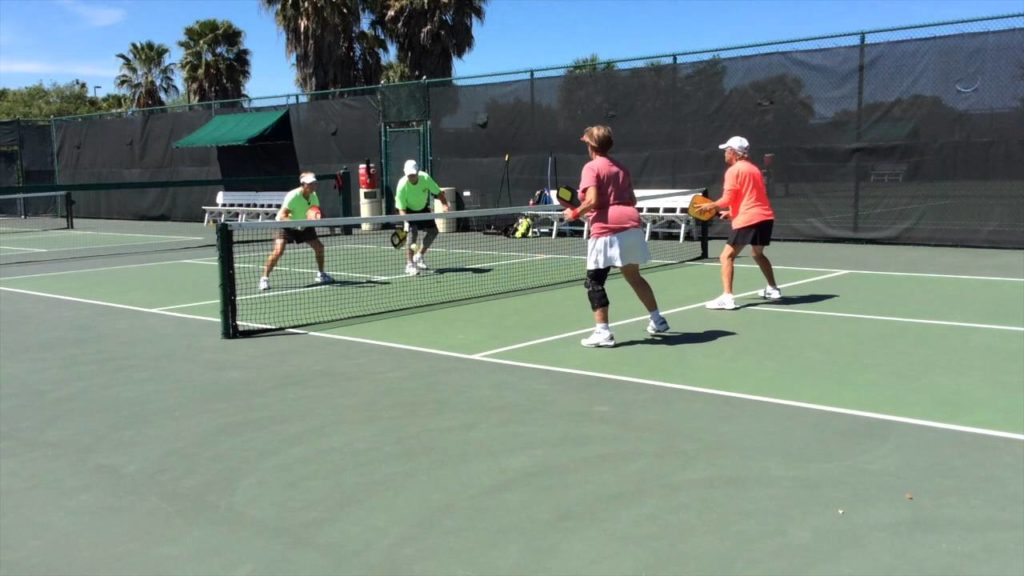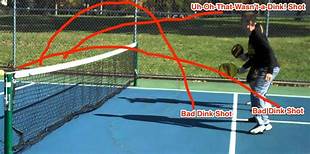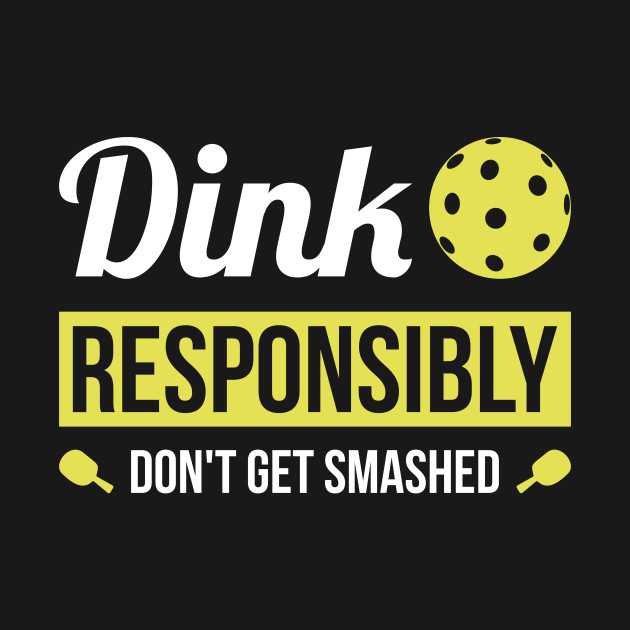Let’s talk about a shot in pickleball called the dink. Now I know the name pickleball dink sounds a bit funny, but if you have played the game you know what it is – or you think you know what it is. Let’s begin by defining the dink shot.
What is a Dink?
One mistake most pickleball players make is confusing the dink with the drop shot. Both shots are hit pretty much the same way. With both shots you angle your paddle up because you have to get the ball over the net. The only real difference is the location from which the shot is hit. The dink is hit from the non-volley or kitchen line, whereas, the drop shot is hit from the baseline. You can hit the drop shot from any place on the court, but usually it is hit from deep in your court while your opponents are back near the baseline. We all know the drop shot in tennis. You see the pros do it all the time usually with a slice to keep the ball low and angled away from the opponent.
So a dink is a soft, delicately placed shot that just goes over the net into the opposing kitchen, and it is hit while standing close to the kitchen line. The following photo shows four players in typical dinking position at the net standing just outside the kitchen. My recommendation is always get as close to the kitchen line as possible when dinking.

How to Hit a Dink
We turn to Mark Renneson of Third Shot Sports to show us how to hit a dink shot In this video Renneson reinforces our understanding of the dink as a soft shot that lands in the kitchen. You need to learn the right technique in order to hit a consistent, well-controlled dink. Keep your wrist back and stable. Rely on your legs and not your hands or arms.
One technique, whether forehand or backhand, is to keep an open stance with feet parallel to the kitchen line. Another technique is to keep a neutral stance with one foot in front of the other. Be sure that the paddle face remains stable through contact regardless of which stance you use, and the paddle moves low to high. A good dink has a fairly pronounced arc making the paddle go from low to high. Pay attention to the trajectory of the arc. You need sufficient arc to get the ball over the net and into the kitchen.
In the next photograph you can see three examples of possible trajectories of a dink shot. Notice that the best one is the one that clears the net by the least amount of space. Just make sure the ball goes over the net.

Another important factor in perfecting your dink shot is to learn to hit it cross-court or diagonally. As demonstrated in this next video, there are many advantages to dinking cross-court and not straight ahead at your opponent. In this video from Pickleball 411, which originates from Pickleball Channel, Steve Paranto explains the advantages of hitting cross-court He says it is easier to hit a dink cross-court because you have more court to play with and it is more forgiving if you inadvertently hit it high.
Finally, here is a good video from Primetime Pickleball called “How To Hit Unattackable Dinks” with Dave Weinbach, US Open and national champion.
Weinbach cautions against hitting the dink so low that it barely goes over the net. You never want to hit the net in pickleball – this is his mantra. Never hit the ball into the net! Respect the net. You can hit the ball high over the night, and the shot can still be unattackable. Get in the habit of getting all the way up to the kitchen line, leaning forward, playing with “soft hands,” and giving yourself a reasonable margin of error over the net with your dink shot.
To Dink or Not to Dink – That is the Question
Sometimes I think why bother to discuss the dink shot because very few players either know how to dink or bother using it in their game. Yet it is a very important shot, so important that if you search YouTube videos on pickleball you will find more videos on dinking by far than on any other shot. When you watch videos of advanced or professional pickleball players in high-stakes games you see a lot of dinking. If you are not an advanced player, though, even if you are a very good player, and you play pickleball at your local YMCA or playground – anywhere there are a lot of players gathered for what might be called “school yard” or “pick up” pickleball – you see almost no dinking. Why is this?
Certainly, dinking is not difficult. You can see from the preceding section in this article that it is not hard to dink. I think the answer is that because most people who play pickleball were probably tennis players at one time (or are currently tennis players), and they are accustomed to hitting winners when they come to the net. I know this was true for me. I would come to the net in pickleball, and instead of dinking I would attempt to win the point by hitting a forehand topspin or backhand slice even though the ball invariably would be lower than the net. Neither is a high percentage shot because the ball usually would just hit the net and bounce to the ground on my side of the court. Instead of keeping the rally going, I often committed an unforced error. I have learned from my mistakes and now patiently dink judiciously until an opportunity for a slam or a winning shot comes my way.
Here is a video showing a short segment of the championship game of the 2018 Winter Classic Pickleball tournament in Eden Prairie, MN. This is a 100-dink rally. Both teams display amazing dinking strategy and patience. As is usually the case, the end of the point comes as a result of an unforced error.
Nowadays I respect the net, and when I come to the net I try the dink shot to keep the rally going until one of my opponents hits a shot a little too high or at least in such a way that my partner or I can slam it or hit a winner. Against inexperienced or average players the dink is a deadly weapon because it usually results in your opponent hitting an unforced error.
More on dinking in the next blog post.

